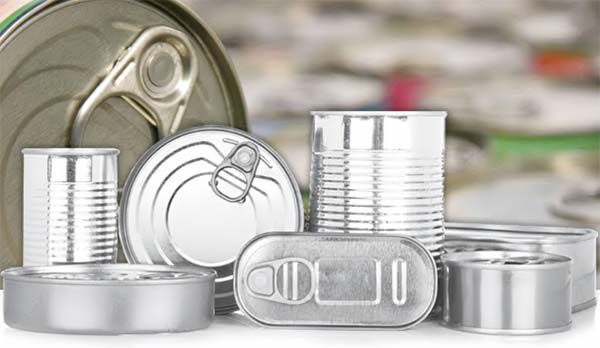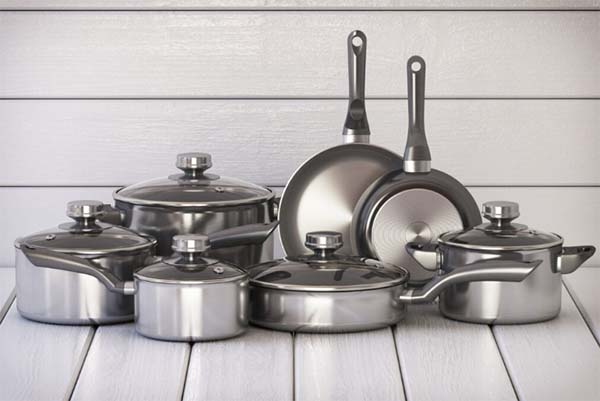Explore los usos de las bobinas de acero al carbono
592Las bobinas de acero al carbono se utilizan ampliamente en una amplia gama de industrias debido a su resistencia, versatilidad y asequibilidad.
Ver detallesBuscar en toda la estación
Quick Answer: Tinplate and enamel steel plate are not the same.
Hojalata is steel coated with tin for lightweight corrosion protection, mainly used in food and beverage packaging.
Chapa de acero esmaltado is steel fused with a glass-like ceramic layer for durability, heat resistance, and long-term use in cookware, tanks, and industrial equipment.
A menudo, los compradores se encuentran sopesando cuidadosamente estos dos materiales, especialmente cuando sus proyectos implican normativas de seguridad alimentaria, exposición a productos químicos o al calor, o requisitos de marca para productos destinados al consumidor. Este artículo analiza principales diferencias entre la hojalata y el acero esmaltadoEn la página web de la Comisión Europea, se destacan las preocupaciones habituales de los compradores y se ofrecen orientaciones prácticas para elegir el material adecuado.

Hojalata is a thin, cold-rolled carbon steel sheet coated with a fine layer of tin. The tin acts as a corrosion-resistant barrier, while the underlying steel provides strength and formability.
Las aplicaciones típicas son:
Ventajas: smooth surface, easy forming, cost-effective, food-safe.
Lo mejor para: short-to-medium-term corrosion protection, clean surfaces, and decorative packaging.

Chapa de acero esmaltadoEl esmalte vítreo, también llamado acero vitrificado o placa de esmalte porcelánico, es un sustrato de acero al carbono recubierto con una capa vítrea de base cerámica mediante un proceso de fusión a alta temperatura (normalmente 800-900 °C). Esto crea una superficie dura y brillante que es químicamente inerte y muy duradera.
Las aplicaciones típicas son:
Ventajas: long-term durability, corrosion and heat resistance, chemical stability.
Lo mejor para: harsh environments, high heat, acidic or chemical exposure.
Los compradores no sólo comparan materiales, a menudo evalúan riesgo, conformidad, coste totaly rendimiento del producto a lo largo del tiempo. A continuación se indican los principales ámbitos en los que los clientes suelen dudar o comparar antes de tomar una decisión:
Dudas de los clientes:
"¿Durará lo suficiente el revestimiento de estaño en el entorno real de mi producto?".
"¿El acero esmaltado está sobredimensionado (y sobrevalorado) para mis necesidades?"
Contesta: Si almacena o procesa materiales ácidos, o si su producto va a limpiarse frecuentemente con productos químicos agresivos, acero esmaltado probablemente superará a la hojalata a largo plazo.
Dudas de los clientes:
"¿Resistirá el material a repetidos ciclos de calentamiento?".
"¿Puede degradarse el revestimiento superficial bajo la llama directa o el vapor?"
Contesta: Si el calor es un factor importante, ya sea por la cocción, la esterilización o la exposición al sol exterior...chapa de acero esmaltado es la mejor opción.
Dudas de los clientes:
"¿Qué material me facilita la autorización reglamentaria?".
"¿Afectará el esmalte al sabor o la seguridad de los alimentos?"
Contesta: Ambos materiales pueden ser seguros para los alimentos si se procesan correctamente. La hojalata es más fácil de certificar para el envasado masivo de alimentos, mientras que acero esmaltado destaca en aplicaciones reutilizables en contacto con alimentos.
Dudas de los clientes:
"¿Puedo utilizar hojalata para envases premium?"
"¿Es el acero esmaltado demasiado industrial para el consumo?"
Contesta: Para envases decorativos y destinados al consumidor, hojalata gana en personalización. Para productos que requieren una superficie limpia, estéril y profesional (como depósitos médicos o utensilios de cocina), acero esmaltado es ideal.
Dudas de los clientes:
"¿Puedo embutir o estampar este material?"
"¿Se agrietará el esmalte durante la fabricación?"
Contesta: Si se requiere un encofrado profundo, hojalata es una opción mejor. El acero esmaltado debe moldearse en bruto y luego recubrirse, por lo que es adecuado para paneles planos o recipientes moldeados fabricados en dos etapas.
Dudas de los clientes:
"¿Merece la pena el sobrecoste del esmalte para mi aplicación?"
"¿Puedo reducir los costes de por vida con menos sustituciones?".
Contesta: Para uso a corto plazo o de gran volumen, hojalata es más económico. Pero si su prioridad es la durabilidad, la resistencia y un mantenimiento mínimo, acero esmaltado puede ahorrarle costes a largo plazo.
| Propiedad | Hojalata | Placa de acero esmaltado |
| Material de base | Acero laminado en frío con bajo contenido en carbono | Acero bajo en carbono |
| Material de revestimiento | Estaño | Esmalte vítreo (vidrio fundido) |
| Proceso de revestimiento | Galvanoplastia o inmersión en caliente | Fusión a alta temperatura (~850°C) |
| Resistencia a la corrosión | Entornos suaves | Productos químicos agresivos, ácidos, vapor |
| Resistencia al calor | Hasta 230°C | Hasta 600°C+ |
| Acabado superficial | Liso, metálico, imprimible | Brillante, resistente a los arañazos |
| Seguridad alimentaria | Sí (con revestimiento) | Sí |
| Aplicaciones | Latas, tapones, envases | Utensilios de cocina, tanques, arquitectura |
| Coste | Baja | Más alto |
| Reciclabilidad | Excelente | Moderado |
| Personalización | Alta (impresión, lacado) | Limitado (color, logotipo incorporado) |
| Caso práctico | Material recomendado |
| Latas de bebidas o alimentos | Hojalata |
| Utensilios de cocina (sartenes, bandejas de horno, parrillas) | Placa de acero esmaltado |
| Tanques de almacenamiento de productos químicos | Placa de acero esmaltado |
| Latas decorativas para regalo | Hojalata |
| Calderas y calentadores industriales | Placa de acero esmaltado |
| Envases médicos o farmacéuticos | Depende - ver necesidades de corrosión |
Contact CJM Steel today for personalized advice. We specialize in steel products for industrial, architectural, and consumer applications—with global export capabilities.
ContactLas bobinas de acero al carbono se utilizan ampliamente en una amplia gama de industrias debido a su resistencia, versatilidad y asequibilidad.
Ver detallesLos tubos de acero al carbono son resistentes, duraderos y se utilizan ampliamente para transportar fluidos y gases en diversas industrias.
Ver detallesDescubra qué calidades de chapa de acero se adaptan mejor a la construcción naval y de petróleo y gas en alta mar. Compare EH36, AH36, API 2H y S420G2 en cuanto a resistencia a la corrosión, solidez y certificación.
Ver detallesExplore las 10 calidades de chapa de acero más utilizadas en la construcción internacional. Compare A36, A572, A516, S355, EH36 y más para las necesidades de su proyecto.
Ver detalles
HolaConéctese